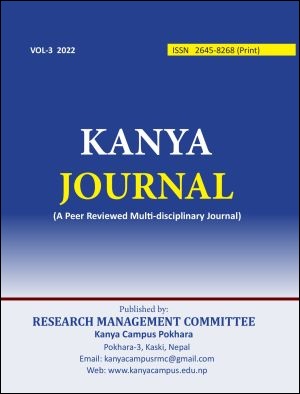Buddha’s Middle Path: A Journey of Self-evolution in Rudyard Kipling’s Kim
DOI:
https://doi.org/10.3126/kanyaj.v3i1.45405Keywords:
Buddhism, the Middle Path doctrine, monk, accompaniment, phenomenaAbstract
This paper has explored the Buddhist Middle Path doctrine in Rudyard Kipling’s novel ‘Kim’, which was written in the background of colonized India. The Buddha first enunciates The Middle Path in Dhammacakkappavattana-sutta, and teaches people to avoid two extremes: self-indulgence and self-mortification in daily life in order to free themselves from attachment and suffering. This article has observed how this idea is reflected in words and actions in two characters, namely the lama, a Buddhist monk and an orphan English lad in Kim. After briefly talking about what Buddhism has said about Middle path of living, interpretation goes on studying how the lama as a Buddhist monk himself applies the doctrine and whether the boy understands and realizes the significance of its practically in his life or not. The paper has used deductive logical approach on qualitative contents and extracts from authentic literary discourse and draws conclusion from interpretation and analysis on how both characters apply the Middle path of living in words and actions. The finding shows that the lama and Kim do not have any religious conflicts and misunderstanding for they both get simply guided by value and practicality of the Middle Way of living. They show less attachment to the things they perform, explore and accomplish.




